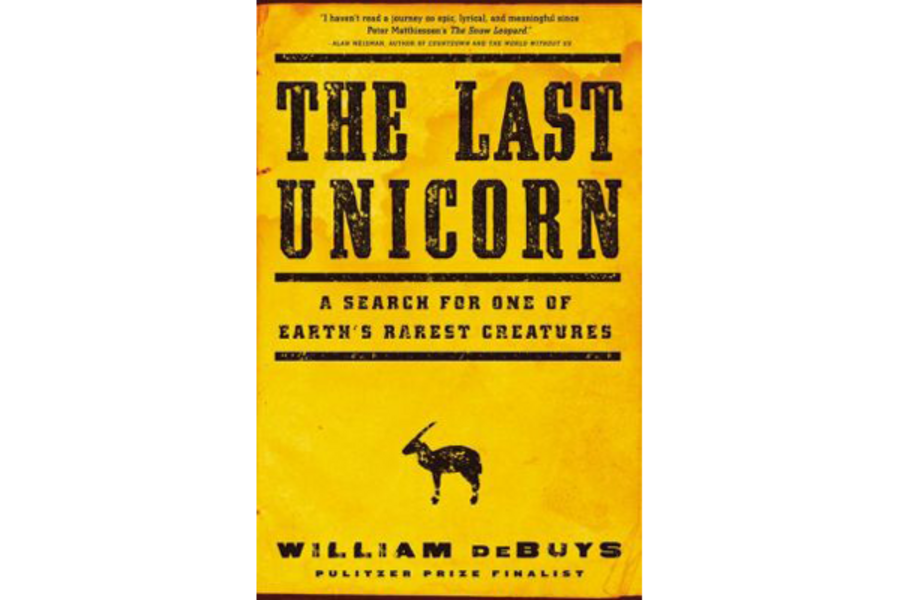'The Last Unicorn' follows a quest for one of the planet's rarest, most endangered species.
Loading...
Though its title might suggest otherwise, William deBuys’s new book, The Last Unicorn: A Search for One of Earth’s Rarest Creatures, is not about an attempt to glimpse the mythological creature of medieval legend. DeBuys is seeking a flesh-and-blood animal, but his quarry is nearly as difficult to find.
In 1992, scientists announced the discovery of an entirely new species of large land mammal called the saola. Not only was the saola a new species, the animal was designated a unique genus of bovids, a group of grazing ruminants that include antelope, cattle, and bison. Mysterious and evolutionarily ancient, the saola live only in one very restricted habitat, a stretch of the dense and moist jungles on the border of Vietnam and Laos.
Hoping to become one of the first Westerners to see a living saola in the wild, deBuys joins an expedition led by American field biologist Bill Robichaud and treks deep into the remotest reaches of the Nakai-Nam Theun (NNT) National Protected Area in Laos. The result of this journey is a book that is simultaneously an adventure story, a melancholy parable of the challenges of conservation in an increasingly crowded world, and an engaging introduction to the biota of a unique ecosystem.
Villagers living in and around the protected area knew about the saola long before its discovery by Western scientists, but most were unaware that the animal lived nowhere else on earth. They occasionally hunted saolas, using the animals’ long, straight horns to decorate the walls of their huts. Such trophies alerted Westerners to the animal’s existence; the unusual horns belonged to no species they recognized.
After its discovery made international headlines, conservation groups and scientists attempted to study the saola in the wild and in captivity. But the animals were incredibly elusive, and their habitat was so remote and unforgiving – think leeches and drenching rain – that expeditions were expensive and difficult. When villagers did manage to capture saolas and transport them to zoos, they invariably languished in captivity, dying after only a few months.
A biologist estimated in 1996 that between 70 and 700 saolas might remain in Laos. But by the time deBuys travels to the Annamite Mountains almost two decades later, the population may be as small as 100.
As deBuys soon discovers, saolas face an astonishing range of existential threats, nearly all of which involve humans. These include local villagers, whose fastest route to improved material circumstances is often illegal harvesting of the animals and trees in the protected area. The tension between social development and natural conservation is fundamental to this book, and deBuys acknowledges that there are not obvious solutions.
DeBuys endures ants, leeches, armed poachers, meager rations, torrential rain, and arduous trekking as he and a team of local guides and the fantastically knowledgeable Robichaud search the dense jungles for the elusive saola. However intractable the human tendency to pillage our environments, deBuys and Robichaud show the strength of an opposite impulse – to approach nature with wonder, knowledge, and a deep appreciation of beauty. DeBuys paints the disappearing landscapes of his journey with beautiful and evocative prose.
Nick Romeo is a regular contributor to the Monitor’s books section.






